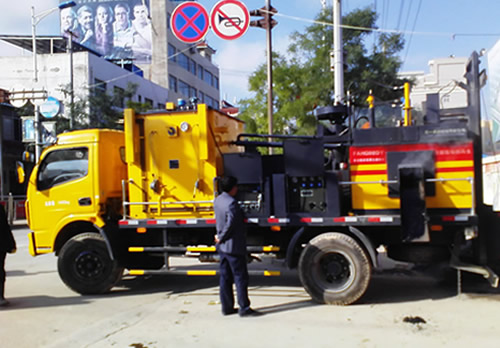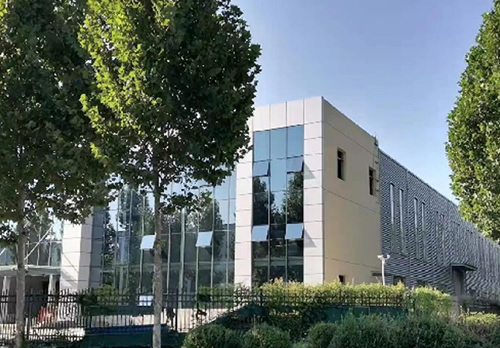In modern road maintenance work, asphalt pavement repair vehicles are indispensable and important equipment. It can quickly and efficiently repair damaged asphalt pavements, ensuring smooth and safe roads. In order to keep the asphalt pavement repair vehicle in good working condition and fully utilize its efficiency, daily maintenance and timely repair work are crucial.
Daily maintenance is the foundation for ensuring the normal operation of asphalt pavement repair vehicles. Firstly, it is important to pay attention to the cleanliness of the vehicle's exterior. Regularly cleaning the vehicle body to remove dust, dirt, asphalt and other attachments can not only maintain the cleanliness and beauty of the vehicle, but also prevent corrosion and damage. At the same time, it is necessary to carefully inspect the condition of the vehicle's tires, including tire pressure, wear level, and whether there is any damage. Ensuring that the tires are in good condition is of great significance for the stability and safety of the vehicle during driving.
For key components of asphalt pavement repair vehicles, such as engines, hydraulic systems, etc., they require even more careful maintenance. As the power core of a vehicle, the engine should be regularly replaced with oil, air filters, etc. to ensure good lubrication and smooth operation. Also, pay attention to checking the engine's cooling system to ensure sufficient and normal circulation of coolant and prevent engine overheating. The hydraulic system should regularly check the level and quality of the hydraulic oil, replenish or replace the hydraulic oil in a timely manner, and check for leaks in the hydraulic pipelines and loose joints to ensure the stability and reliability of the hydraulic system.
During daily use, operators must strictly follow the operating procedures. Avoid rough handling and unreasonable use, such as overloading, speeding, etc., to prevent damage to the vehicle. After each homework is completed, a comprehensive inspection of the vehicle should be carried out, including whether the connections of each component are tight, whether they are loose or worn, etc.
Maintenance and repair are key steps in ensuring the long-term reliable operation of asphalt pavement repair vehicles. It is essential to develop a scientifically reasonable maintenance and repair plan. Reasonably arrange regular maintenance and repair work based on the frequency of vehicle use, work intensity, and operating conditions. During the maintenance and repair process, professional technicians should use appropriate tools and equipment to ensure the quality of maintenance and repair.
For the maintenance and repair of the engine, it is necessary to regularly check the various performance indicators of the engine, such as power, torque, fuel consumption, etc., and promptly identify and handle problems. For engines that have malfunctioned, timely maintenance or replacement of parts should be carried out. When repairing the engine, it is necessary to strictly follow the requirements of the maintenance manual to ensure the quality of the repair.
The maintenance and repair of hydraulic systems should not be underestimated. Regularly check the working status of hydraulic pumps, hydraulic motors, hydraulic cylinders, and other components.
Daily maintenance is the foundation for ensuring the normal operation of asphalt pavement repair vehicles. Firstly, it is important to pay attention to the cleanliness of the vehicle's exterior. Regularly cleaning the vehicle body to remove dust, dirt, asphalt and other attachments can not only maintain the cleanliness and beauty of the vehicle, but also prevent corrosion and damage. At the same time, it is necessary to carefully inspect the condition of the vehicle's tires, including tire pressure, wear level, and whether there is any damage. Ensuring that the tires are in good condition is of great significance for the stability and safety of the vehicle during driving.
For key components of asphalt pavement repair vehicles, such as engines, hydraulic systems, etc., they require even more careful maintenance. As the power core of a vehicle, the engine should be regularly replaced with oil, air filters, etc. to ensure good lubrication and smooth operation. Also, pay attention to checking the engine's cooling system to ensure sufficient and normal circulation of coolant and prevent engine overheating. The hydraulic system should regularly check the level and quality of the hydraulic oil, replenish or replace the hydraulic oil in a timely manner, and check for leaks in the hydraulic pipelines and loose joints to ensure the stability and reliability of the hydraulic system.
During daily use, operators must strictly follow the operating procedures. Avoid rough handling and unreasonable use, such as overloading, speeding, etc., to prevent damage to the vehicle. After each homework is completed, a comprehensive inspection of the vehicle should be carried out, including whether the connections of each component are tight, whether they are loose or worn, etc.
Maintenance and repair are key steps in ensuring the long-term reliable operation of asphalt pavement repair vehicles. It is essential to develop a scientifically reasonable maintenance and repair plan. Reasonably arrange regular maintenance and repair work based on the frequency of vehicle use, work intensity, and operating conditions. During the maintenance and repair process, professional technicians should use appropriate tools and equipment to ensure the quality of maintenance and repair.
For the maintenance and repair of the engine, it is necessary to regularly check the various performance indicators of the engine, such as power, torque, fuel consumption, etc., and promptly identify and handle problems. For engines that have malfunctioned, timely maintenance or replacement of parts should be carried out. When repairing the engine, it is necessary to strictly follow the requirements of the maintenance manual to ensure the quality of the repair.
The maintenance and repair of hydraulic systems should not be underestimated. Regularly check the working status of hydraulic pumps, hydraulic motors, hydraulic cylinders, and other components.











 CALL
CALL PRODUCTS
PRODUCTS PROJECTS
PROJECTS CONTACT
CONTACT